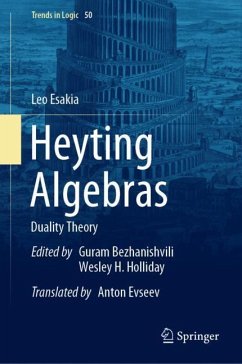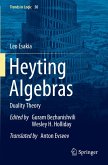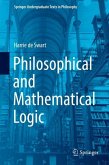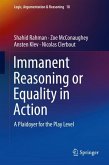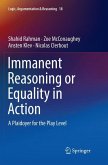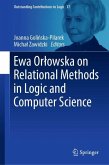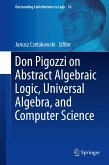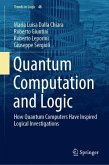This book presents an English translation of a classic Russian text on duality theory
for Heyting algebras. Written by Georgian mathematician Leo Esakia, the text proved
popular among Russian-speaking logicians. This translation helps make the ideas
accessible to a wider audience and pays tribute to an influential mind in mathematical
logic.
The book discusses the theory of Heyting algebras and closure algebras, as
well as the corresponding intuitionistic and modal logics. The author introduces the
key notion of a hybrid that "crossbreeds" topology (Stone spaces) and order (Kripke
frames), resulting in the structures now known as Esakia spaces. The main theorems
include a duality between the categories of closure algebras and of hybrids, and a duality
between the categories of Heyting algebras and of so-called strict hybrids.
Esakia's book was originally published in 1985. Itwas the firstof a planned two-volume monograph
on Heyting algebras. But after the collapse of the Soviet Union, the publishing house
closed and the project died with it. Fortunately, this important work now lives on in
this accessible translation. The Appendix of the book discusses the planned contents
of the lost second volume.
for Heyting algebras. Written by Georgian mathematician Leo Esakia, the text proved
popular among Russian-speaking logicians. This translation helps make the ideas
accessible to a wider audience and pays tribute to an influential mind in mathematical
logic.
The book discusses the theory of Heyting algebras and closure algebras, as
well as the corresponding intuitionistic and modal logics. The author introduces the
key notion of a hybrid that "crossbreeds" topology (Stone spaces) and order (Kripke
frames), resulting in the structures now known as Esakia spaces. The main theorems
include a duality between the categories of closure algebras and of hybrids, and a duality
between the categories of Heyting algebras and of so-called strict hybrids.
Esakia's book was originally published in 1985. Itwas the firstof a planned two-volume monograph
on Heyting algebras. But after the collapse of the Soviet Union, the publishing house
closed and the project died with it. Fortunately, this important work now lives on in
this accessible translation. The Appendix of the book discusses the planned contents
of the lost second volume.
"Leo Esakia's classic monograph is extremely welcome and I hope that it will be widely read. ... Moreover, the exposition, in Esakia's own words and in its entirety, has insights to offer to experienced researchers and relative novices alike. ... Esakia's Introduction to Heyting Algebras. Duality Theory makes interesting reading for its scope and its vision. ... The translation brings subsidiary benefits." (Hilary A. Priestley, Studia Logica, Vol. 109, 2021)
"Presenting in a succinct style the brilliant ideas of the author, this book provides an indispensable authentic source for researchers working on dualities between ordered and topological structures with impact on mathematical logic." (Marcel Erne, Mathematical Reviews, June, 2021)
"Presenting in a succinct style the brilliant ideas of the author, this book provides an indispensable authentic source for researchers working on dualities between ordered and topological structures with impact on mathematical logic." (Marcel Erne, Mathematical Reviews, June, 2021)

